Remember the days when TV would go off the air at midnight? In a world of 24/7 streaming, it’s hard to believe there was ever a time when content was only available on a finite number of channels.
The brave new world of television comes with new opportunities for your advertising strategy. If you want to conquer streaming TV, you need to fully understand the streaming landscape and how consumer viewing behavior is changing.
With today’s endless viewing options, you have to be smart with your streaming TV strategy to catch and keep your audience’s limited attention.
It’s no longer enough to just look at frequency and reach; you need to take the full picture into account to ensure that your TV strategy is having a real impact on your brand’s business outcomes.
To set you up for success (and give you a sneak peek at our latest whitepaper), here are some of the biggest trends shaping the TV landscape this year.
Consumers’ TV viewing habits reflect the number of streaming services available
Much like you can’t expect your audience only to be on one social media platform, you can’t expect your TV audience to only use one streaming service. Especially when new ones seem to be popping up on the daily.
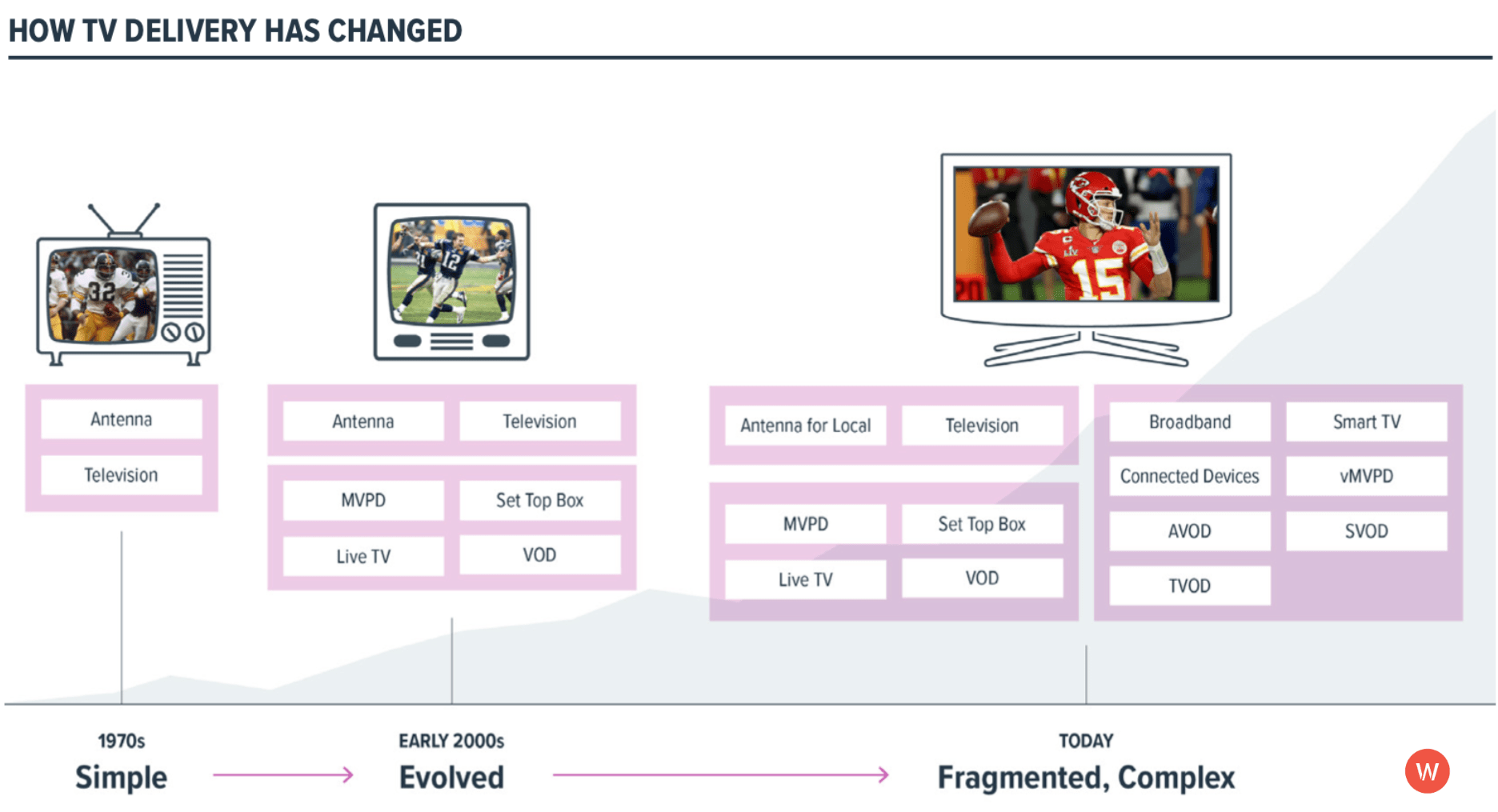
A study from Deloitte found that, on average, US households subscribe to four streaming services. Since there are more than four services available, consumers have to be choosy about where they’re spending their streaming budget. That means you have to be smart about where you choose to spend your ad dollars, too.
Nielsen data indicates that the top streaming services as of May 2023 were YouTube, Netflix, Hulu, Amazon, and Disney+. While you might have better luck reaching an audience on one of these “mainstream” services, you should also keep the potential benefits of niche services in mind.
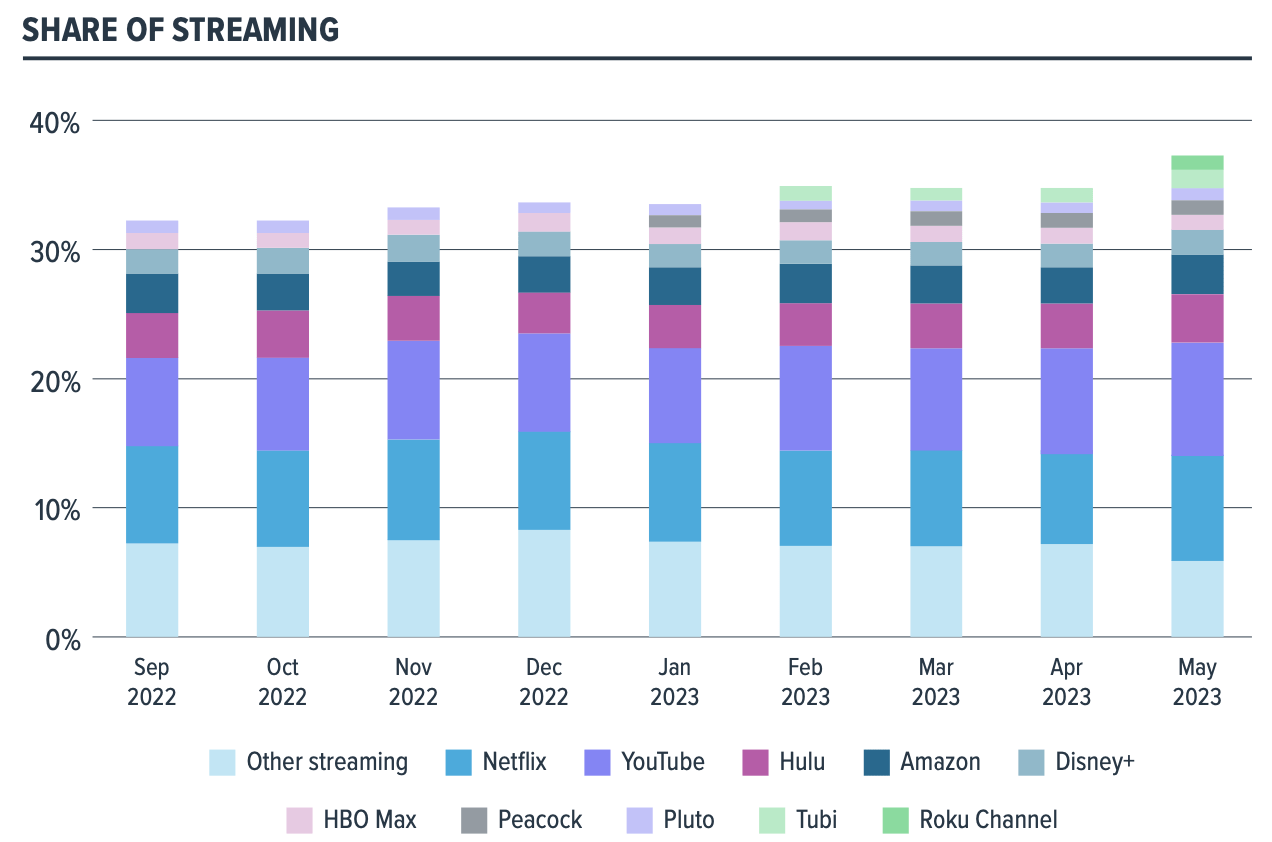
Source: Nielsen
Although all the different service options make it possible to run ads more precisely to reach niche audiences by leveraging different inventory and content, you still need to balance that precision with scale.
Don’t let the lure of more advanced targeting capabilities overtake your goal of reaching a wider audience–that broader reach is still a major part of a full-funnel approach to marketing.
Keep the balance between scale and precision front and center when building out your TV strategy so you have a better sense of the fragmented landscape as a whole and can understand who your audience is and the optimal places to reach them.
The fragmented OTT landscape offers a unique opportunity for advertisers
Even this far into the streaming era, consumers’ TV viewing habits are still changing, and that has big consequences for advertisers.
Services like Netflix may be top of mind, but traditional TV is still around–for now. eMarketer predicts that by the end of 2023, households that don’t pay for traditional TV will outnumber those that do for the first time, and that number will continue to rise.
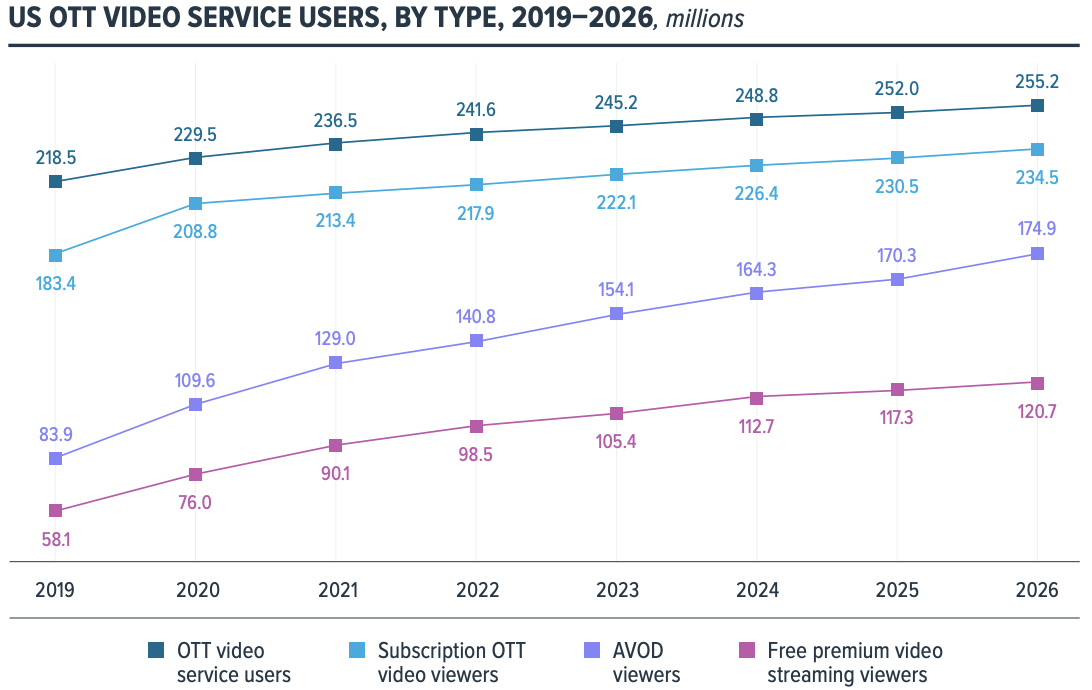
Source: eMarketer
While this is bad news for traditional TV, the fragmentation of the OTT landscape presents new opportunities for advertisers.
Because there are so many streaming options available today, there’s now more advertiser control over inventory access and ad placement on different services. When traditional TV still reigned, you had to go through the network upfront process and give up a lot of dollars well in advance of a commercial airing.
But there are still challenges with placing ads in the newer ecosystem. Most of the publishers themselves are siloed, which makes it difficult to keep track of all the different places you can buy inventory. That’s why it’s important to take a streamlined audience-first approach to media planning that’s driven by data.
The future of TV is advertising-based video on demand (AVOD)
Early on, one of the big draws for cord-cutters to make the switch to subscription-based streaming services was their lack of commercials.
But as the number of new publishers has grown and the economy has gotten shakier, consumers are shifting towards AVOD for lower prices.
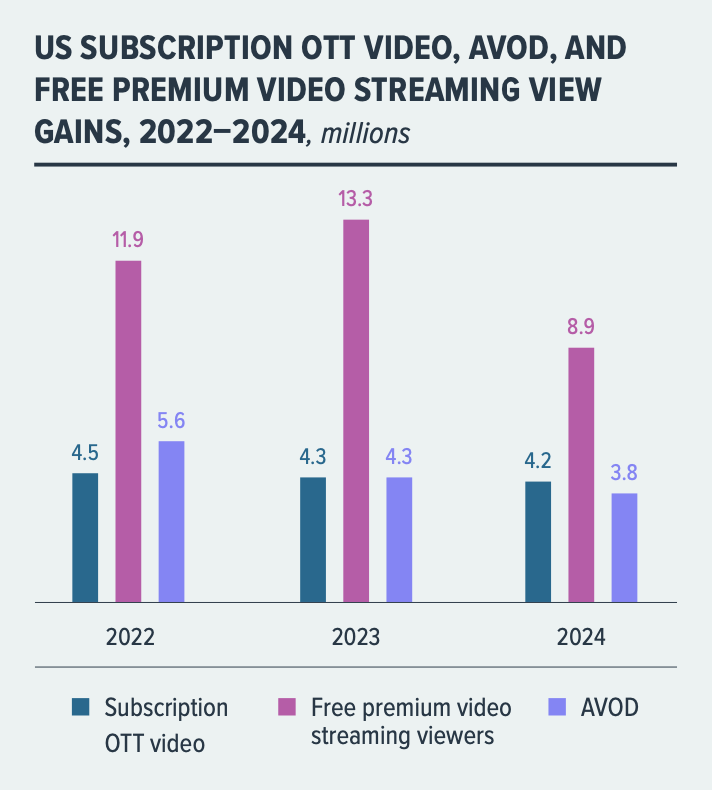
Source: eMarketer
With most US households subscribed to four services a month, the price for consumers to access all their favorite shows on different platforms adds up. That’s why AVOD has become an increasingly attractive option, especially since the price of most streaming services is on the rise.
And this shift to AVOD isn’t limited to low-income consumers. In fact, TTD and YouGov found that US adults with a household income of over $80,000 are 14% more likely to watch ad-supported streaming than those with lower incomes.
Even streaming services that launched without ad capabilities, like Netflix and Disney+, have started rolling out their own ad-supported tiers to give viewers the option to subscribe at a lower price point.
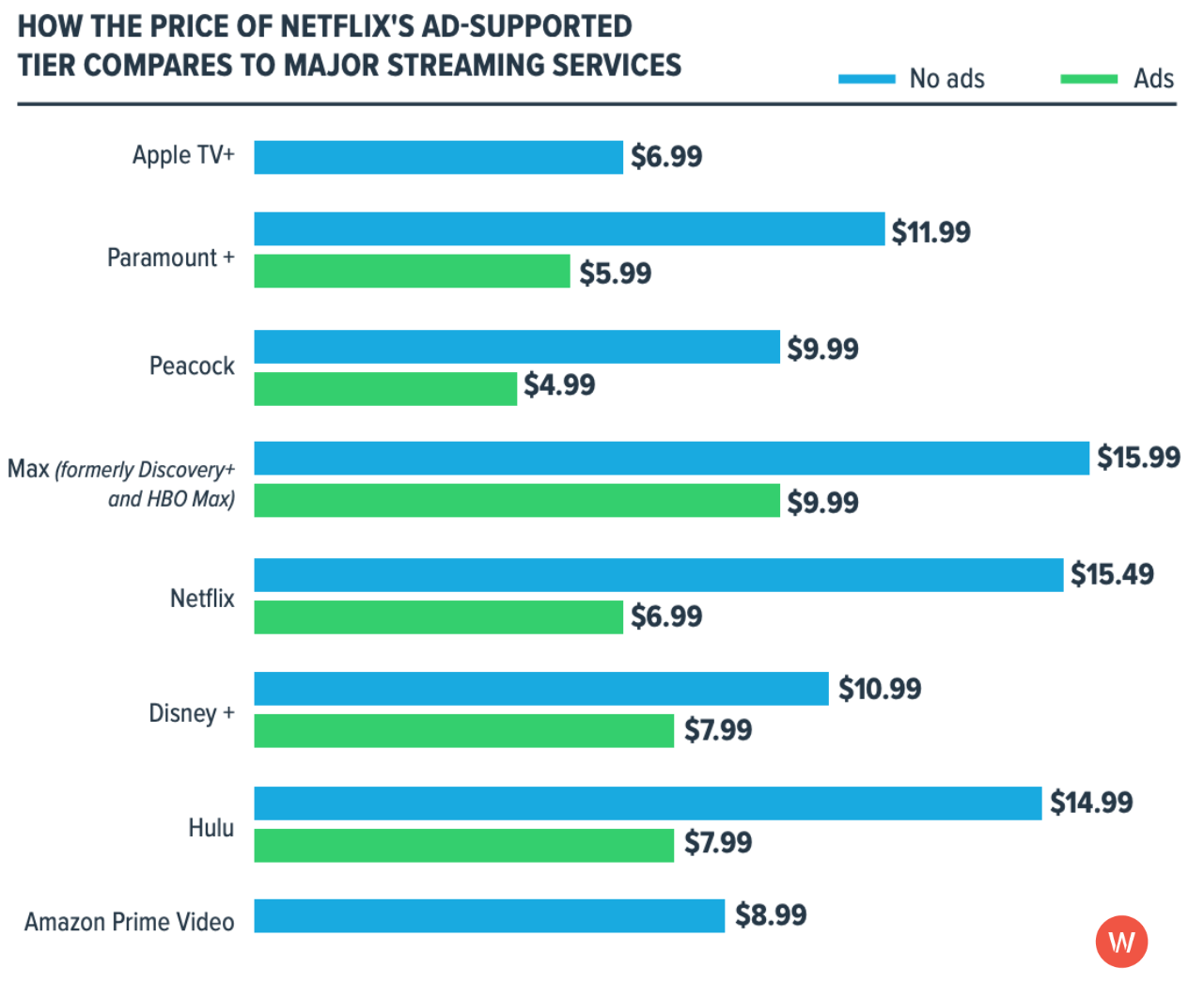
According to Taylor Ash, General Manager of TV Partnerships at The Trade Desk, this change is because streamers have realized that the best way to acquire new customers and retain existing ones is by giving them more options to subscribe. And luckily, that means more choices for advertisers too.
The future of TV is bright, but if you want to take advantage of these emerging trends, you have to have a strategic plan in place. Make sure your plan takes into account both changes in the TV landscape and new ways viewers are interacting with brands both on and off of those publishers.







Responses